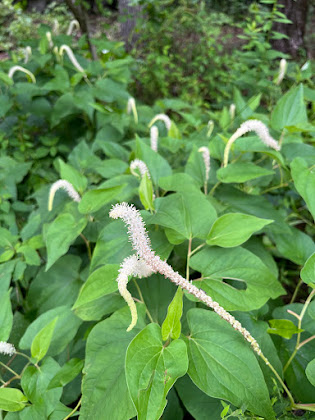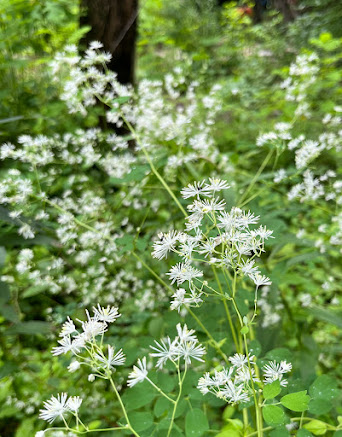The Botanical Art Garden at Herrontown Woods, nicknamed the Barden and packed with more than 150 species of native plants, has a steady stream of blooms through the summer. This is a rich, complex, dynamic landscape that contrasts with the more static "trees n' turf" landscapes we tend to see around town. Walk the paths of the Barden and see if you can find the latest flowers to unfold.
Bottlebrush buckeye (Aesculus parviflora) is a popular shrub for landscaping. Native to the southeast U.S., it creates abundant flowers in the shape of a bottlebrush, pollinated by many kinds of insects, including the beautiful syrinx moth.While pokeweed (Phytolacca americana) can imitate a shrub, its relative in Argentina, the ombu (Phytolacca dioica), forms an unorthodox tree with spongy wood.
The Barden is a special habitat seldom seen in Princeton. We intentionally manage it as an open woodland where shrubs get enough sunlight to form abundant berries for the birds. My love of elderberries extends back to childhood and the delicious pies and jellies we made from its berries, which will turn dark purple when ripe.
The Barden is a special habitat seldom seen in Princeton. We intentionally manage it as an open woodland where shrubs get enough sunlight to form abundant berries for the birds. My love of elderberries extends back to childhood and the delicious pies and jellies we made from its berries, which will turn dark purple when ripe.






